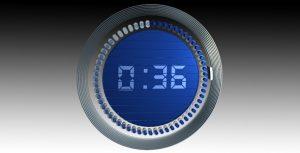 When we launched ithlete in 2009, early users struggled to believe that a metric as insightful as heart rate variability (HRV) could be measured in less than 60 seconds.
When we launched ithlete in 2009, early users struggled to believe that a metric as insightful as heart rate variability (HRV) could be measured in less than 60 seconds.
Previously, HRV measurements had taken between 5 and 30 minutes and required in depth knowledge of the subject to do the necessary analysis. So how did ithlete manage to break the mold with a daily measure that was both convenient enough to fit into your morning routine and scientifically valid?
In fact, it wasn’t just one thing, it was a combination of:
- Choosing an HRV parameter that was stable when used for ultra short durations
- Devising a measurement method, or protocol, that would maximize consistency
The HRV parameter we chose was RMSSD, because research (1) had shown promising results from durations as short as 30 seconds, whereas other HRV parameters, especially frequency domain ones needed up to 5 minutes (or 256 normal heartbeat intervals for the mathematically minded!). The ithlete 1 minute measure has since been validated against longer durations by a number of researchers (2).
The measurement method has two components:
-
An initial stability check.
This means that ithlete waits until the heart beat pattern is stable before allowing the measurements to begin (that’s when the Start button turns green!)
-
Paced breathing.
The use of paced breathing for HRV is often misunderstood, with some people saying that it stresses the user having to follow an animation and others that it distorts the HRV value by making it larger. The truth is that paced breathing measurements give more consistent values of HRV (3). Yes, they tend to be higher than unpaced or free breathing measures, but that really doesn’t matter because each day’s HRV is compared to your own baseline, and that baseline is a little higher with paced breathing.
The paced breathing rate has been chosen to be close to the natural breathing rate of club level runners (3). We did a full summary of this research here. The app animation has been carefully designed to be relaxing (some people even use it for relaxation!). Paced breathing also reduces an effect called ‘parasympathetic saturation’ that tends to distort the HRV of very fit athletes (4).
References:
Tran Thong, Kehai Li, James McNames, Mateo Aboy and Brahm Goldstein
Michael R. Esco and Andrew A. Flatt
- The impact of breathing on HRV measurements: Implications for the longitudinal follow-up of athletes
Damien Saboul, Vincent Pialoux and Christophe Hautier
Gavin Sandercock, Valerie Gladwell, Samantha Dawson, David Nunan, David Brodie and Ralph Beneke

Once again Simon you showed the way:
– Professional HRV tools for pros and …not pros alike thanks to democratic
pricing. ( 1000 $ tools were not unknown of …and are still on the market as far as I know )
– Short, very short measure time, thanks to paced breathing.
– And yes dispensing with the HRM belt and the unclothing that goes with it.
But…this is the least of these “first”.
Simon, many thanks for your dedication.
Thanks to you Yves-Marie for your helpful & insightful feedback – thats just as important!